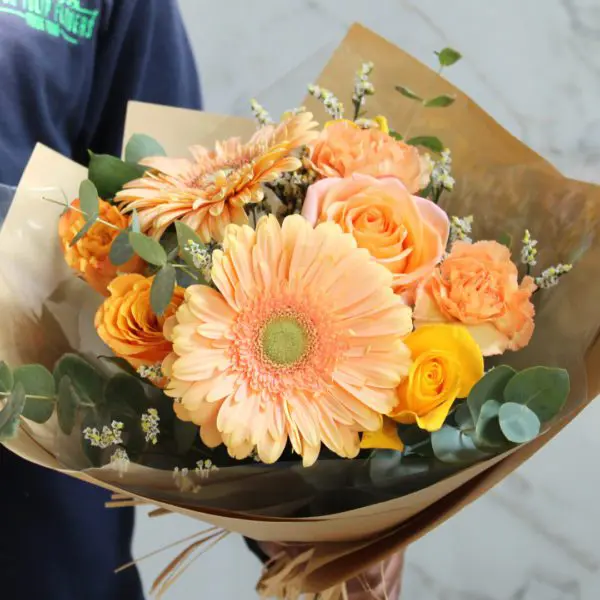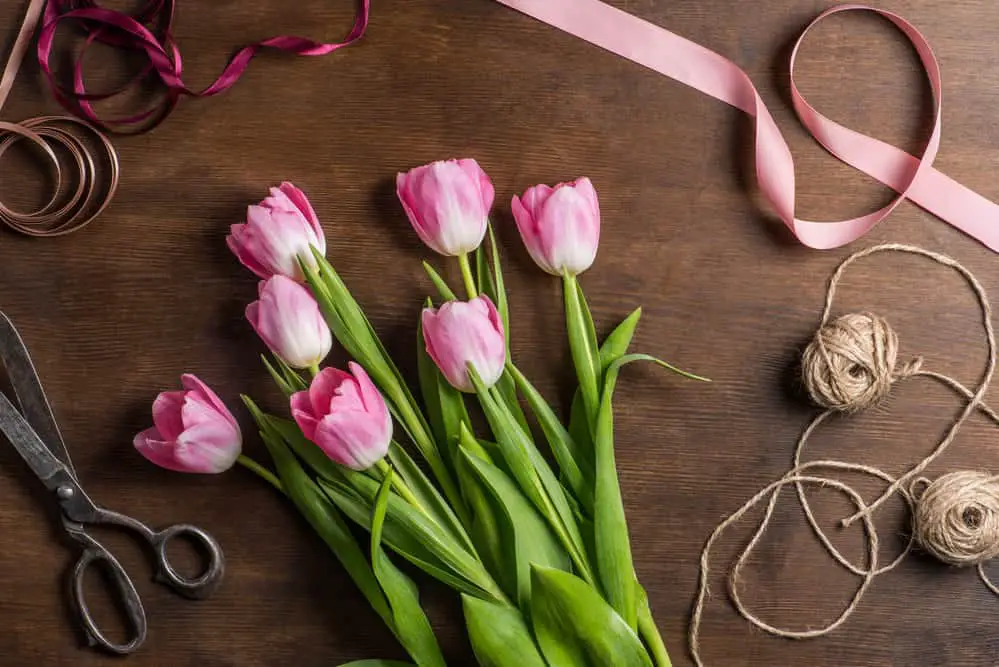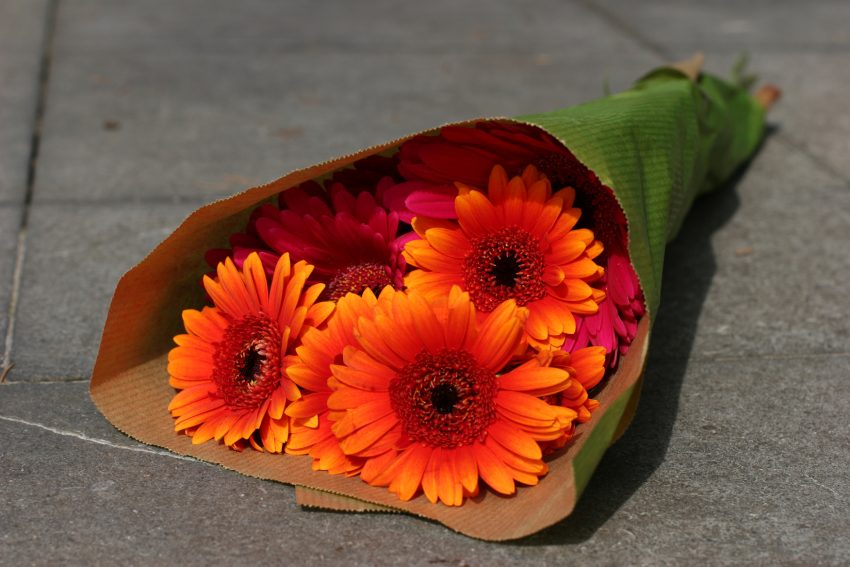Flowers, with their delicate beauty and captivating fragrances, have long been a symbol of nature’s ephemeral grace. However, just as their presence can brighten any space, their lifespans are intrinsically linked to the availability of water. The question of how long flowers can endure without water is a fascinating exploration of the intricate balance between life and decay.
On average, flowers can last about five days without water, but the exact duration depends on factors like species, freshness, temperature, and humidity. Hotter days can cause them to wilt faster.
Now, let’s explore how flowers stay fresh and vibrant, even without water, and uncover the secrets that keep them looking their best.
Optimizing Flower Longevity: Factors and Techniques

Type of Flower: Different flower species exhibit diverse natural lifespans when cut; some maintain their freshness for an extended period, while others tend to have a shorter vase life.
| Flower Type | Lifespan Without Water |
|---|---|
| Roses | Up to 3 days |
| Lilies | 2-10 days (at room temperature, out of direct sunlight) |
| Sunflowers | 4-5 days (with proper care, up to 12 days) |
| Orchids | Up to 3 weeks |
| Carnations | Up to 2 weeks (in a cool, dry spot) |
| Succulents | 1-3 months (storing water in leaves and stems, allow the soil to dry out) |
| Bouquet | Up to 24 hours (depends on flower types used) |
Cutting Technique: The manner in which flowers are severed plays a pivotal role in their durability. Using sharp, clean cutting tools and making slanting cuts on the stems can enhance the ability to absorb water efficiently.
Water Quality: The quality of the water used to nourish cut flowers is crucial. Using clean, room-temperature water is optimal, and it’s essential to change it regularly to avert the proliferation of harmful bacteria.
Then, maintaining a sufficient level in the vase is critical to prevent flowers from becoming dehydrated, which can lead to premature wilting.
Also, the temperature of the water can either expedite or retard the flowers’ absorption. For most flowers, room-temperature water is the ideal choice.
Temperature: It plays a vital role in it. Warmer temperatures accelerate wilting, so it’s best to keep them in a cool environment with indirect light to minimize the negative impact of heat.
Humidity:Temperature and it levels are frequently correlated. Elevated humidity, usually linked to warm temperatures, can be depleting and cause plants to quickly wilt and perish. In warm, muggy weather, flowers usually wilt and perish rapidly. Nonetheless, a flower’s life can be extended by cooler temperatures and low humidity.
Wrapped in Damp Material: When you can’t place cut flowers in a vase of water, wrapping them in damp material, such as a towel, can help maintain the stem’s moisture. This small amount of water won’t keep them healthy for an extended period but can extend their vitality.
Level of Hydration: Another key factor is hydration level at the time of cutting. They are not already dehydrated when picked and have a better chance of lasting longer without water. Further, collecting blooms in the early morning or late evening, when the weather is cooler and flowers are well-hydrated, can contribute to their extended lifespan.
Light Exposure: Placing flowers in direct sunlight or under intense artificial lighting can expedite dehydration. Opting for indirect or filtered light is generally preferable to maintain the freshness of the blooms.
How Can You Keep Flowers Fresh For A Day Without Water?
1. Prioritize Hydration: Commence your preparation by ensuring your flowers are well-hydrated on the eve of their waterless sojourn. Immerse them in a vase filled with fresh water, enhancing their vitality with the use of floral preservatives, if at your disposal. This step optimizes their capacity for absorption.
2. Select Sturdy Blooms: Opt for resilient and hardy flower varieties, capable of enduring brief periods without their life source. Consider stalwarts like roses, carnations, and chrysanthemums, renowned for their tenacity in adverse conditions.
3. Stem Pruning: Execute careful stem pruning in the moments preceding the waterless travel. Trim the flower stems at a slight slant to create a new surface that will aid in retaining water when they are restored to their aquatic habitat.
4. The Protective Moisture Barrier: Employ the power of a moist paper towel or cloth. Gently drape this damp sentinel around the lower reaches of the flower stems, deftly securing it with a rubber band or twist tie. This ingenious shield helps maintain a modicum of essential moisture during the flower’s waterless adventure.
5. Seek Shelter in Cool Enclaves: Explore and designate a cool, shaded sanctuary for your floral companions during their water-free interlude. Shield them from the unrelenting rays of direct sunlight and avoid warm locales, which can hasten their inevitable withering.
6. Resurrection through Rehydration: Upon returning home or reaching a suitable haven, liberate the flowers from their protective wraps. Swiftly usher them into a vessel filled with rejuvenate life-giving water. Reenact the ritual of stem trimming at a graceful angle before the flowers immerse themselves in this liquid sanctuary.
7. Cleaning: Remove any dead leaves from your vase every two to three days, give it a quick rinse with cold water, and refill it with brand-new water.Use fertilizer that is organic as plant food.
How Long Do Cut Flowers Last?
| Flower Type | Average Freshness Duration |
| Roses | 1 to 2 weeks |
| Daisies | 2 to 3 weeks |
| Orchids | 2 to 3 weeks |
| Carnations | 2 to 3 weeks |
| Peonies | 4 to 5 days |
| Sunflowers | 1 to 2 weeks |
| Freesia | 2 to 3 weeks |
| Tulips | 5 to 7 days |
| Hydrangeas | 2 to 3 days |
| Calla Lilies | 3 to 10 days |
| Buttercups | 5 to 7 days |
| Alstroemeria | 1 to 2 weeks |
| Gerbera Daisies | 2 to 3 weeks |
| Dahlias | 5 to 7 days |
| Aster | 5 to 10 days |
How to Keep Cut Flowers Fresher for Longer

1. Precision in Stem Cutting: Begin by making precise, angled cuts on the stems, facilitating their ongoing water absorption. This vital step forms the foundation for their longevity.
2. Regular Stem Trimming: On a weekly basis, perform meticulous stem trimming, removing approximately ¼ to ½ inch. This practice ensures that a continuous supply of fresh, open stem is available for optimal water intake.
3. Flower Food Elixir: Empower your cut flowers with the nourishing benefits of a flower food powder. This elixir provides an extra boost, enhancing their endurance and vibrancy.
4. Shaded Serenity: Shield your floral companions from direct sunlight and excessive heat. These environmental factors can accelerate the withering process, and preserving their freshness entails the art of subtle shade and coolness.
FAQs
How Long Can Cut Flowers Go without Water in A Car?
Cut flowers can endure varying durations without water, particularly in a car. Factors such as the flower type and environmental conditions play a pivotal role. Generally, hardier blooms like roses and carnations can last 4-6 hours in a car, while delicate varieties may wilt in as little as 2 hours.
How To Keep Flowers Fresh Overnight Without Water?
If you seek to keep cut flowers fresh overnight without water, consider these methods:
- Store them in the fridge or a cool, dry location to maintain their rigidity.
- Wrap the cut stem with plastic and secure it with a rubber band to lock in moisture.
- Employ ice cubes or ice packs alongside the flowers to prolong their freshness.
Will Cut Flowers Die Without Water?
Yes, Cut flowers start deteriorating as soon as they are severed from the plant. They are technically considered “dead” as they lack a direct water supply. Typically, they can last for only a few hours without access to water.
Are Cut Flowers Alive?
No, Cut flowers are not considered living entities since they lack essential components, such as roots and a central stem or trunk, vital for the functioning of a live plant.
How Long Will Flowers Last in a Car Trunk?
The survival of cut flowers in a car trunk varies with factors like temperature. While hardy, moisture-retaining blooms like lilies can endure up to 4 hours, delicate tulips may last only 2 hours outside water in hot conditions. In cold weather, proper care can extend their life. When stored indoors, cut flowers can last 2-4 days outside water in moderate temperatures.
How Long Do Cut Flowers Last in Water?
Cut flowers placed in clean water typically maintain their freshness for 7-12 days. Roses and chrysanthemums are known to last up to 14 days. Regular water changes every 2-3 days, stem trimming at an angle, and leaf removal from the water can extend their lifespan.
Final Words
As a result, a variety of factors, such as the type of flower, the surroundings, and maintenance, affect how long flowers last without water. Some may wither more quickly, but others may survive for several hours to a day without water.
In addition, Hardier flowers, such as lilies, roses, and carnations, are more likely to survive, especially if stored in cold, shaded spots. For cut flowers, water changes, regular stem pruning, and enough hydration are critical to extending their life.
Lastly, by being aware of these factors, you can extend the attractiveness of cut flowers and preserve their freshness, extending the time when nature’s ephemeral beauty adorns our surroundings.

